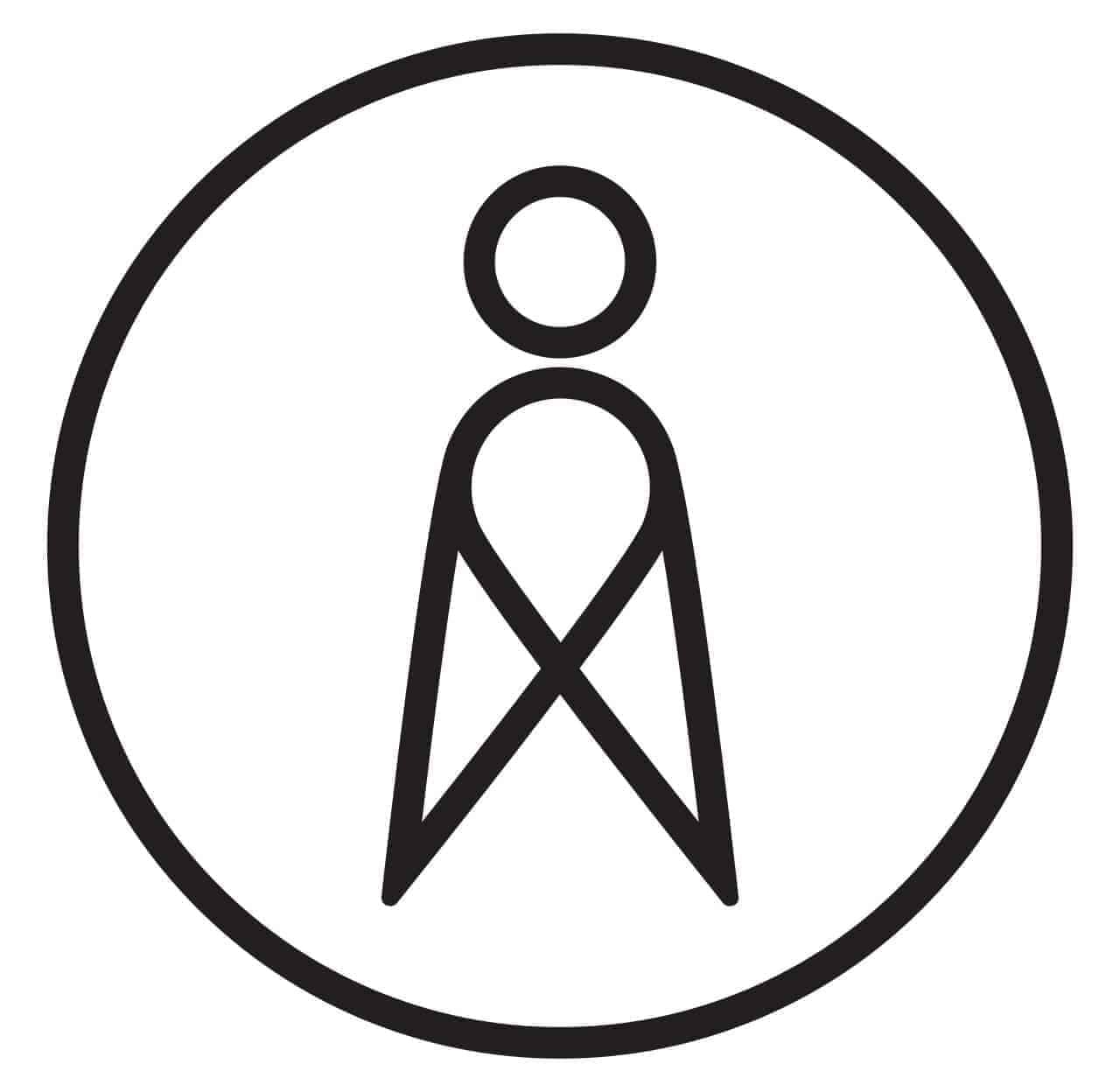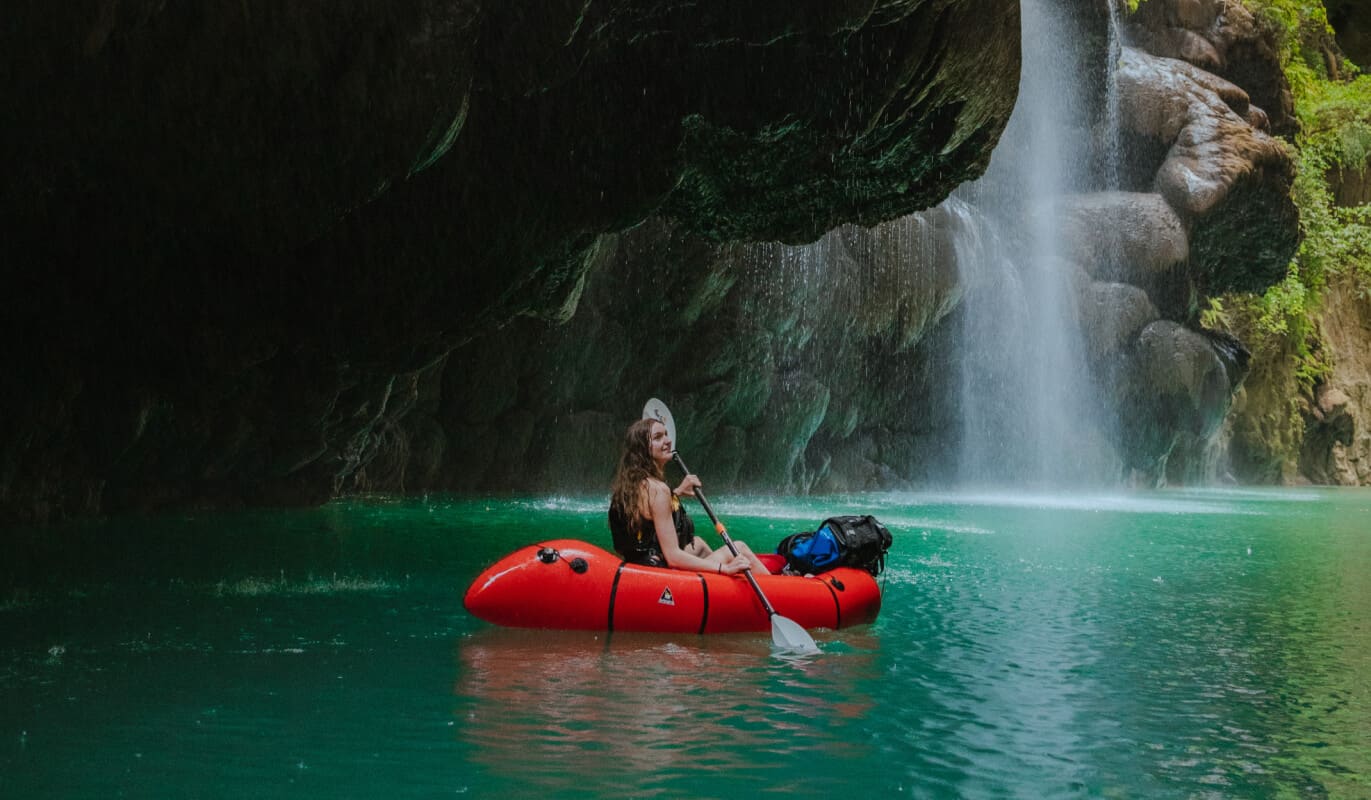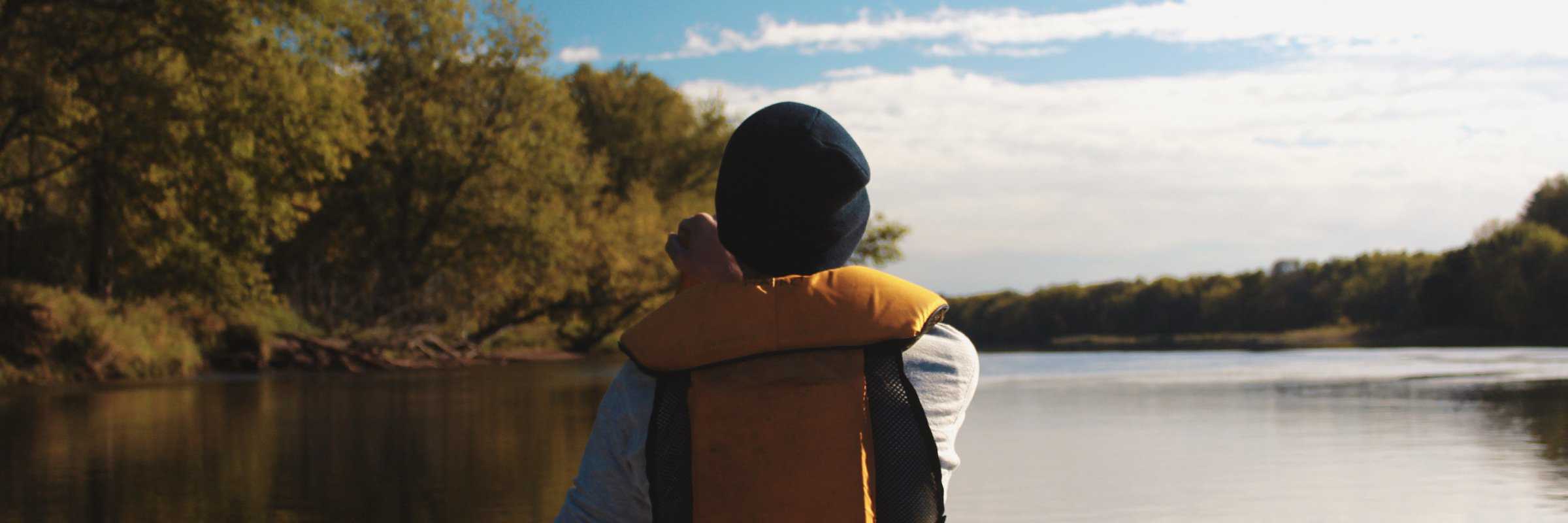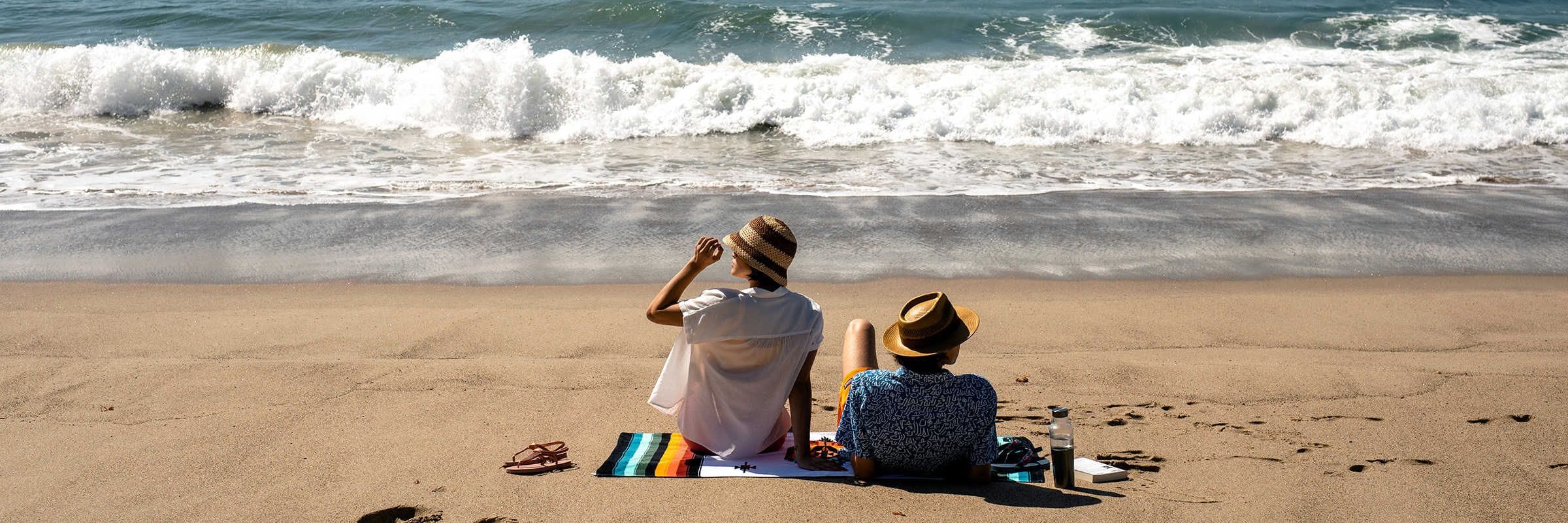What Is Paddle Boarding?
Paddle boarding is a fun, rewarding, and highly accessible water sport. As the name implies, the activity combines the act of paddling with a long flotation device. From a prone position, your arms act as paddles to propel you forward. In a kneeling or standing position, you can employ an actual paddle.
Before we go any further, a quick word on nomenclature: Paddle boarding refers to the act of lying prone on a paddle board while using your arms to propel yourself through the water. Stand-up paddle boarding (SUP) – also known as stand-up paddle surfing – refers to the same activity, but performed while standing up. In this case, a single oar is used to paddle stroke.
Though each sport has its own unique history, technique, and fanbase, we’ll largely use the terms interchangeably throughout this article, unless specified otherwise.
PADDLE BOARD SHAPE
Most boards come in two main shapes: All Around and Touring.
All Around
The all-around paddle board features a distinctly rounded nose with a little rocker. This hull shape is known as a planing hull. Planing hulls lift the front of the board just enough to improve gliding. The planing hull design is ideal for handling waves or choppy water.
In terms of shape, an all around is considerably wider than its touring counterpart. In fact, the ample width makes it easy to manoeuvre and maintain balance. This is a major plus for beginner paddlers looking for an accessible first board. That said, the shape and size of these boards doesn’t translate well for speed or long distance paddling.
GET AN ALL-AROUND PADDLE BOARD (PLANING HULL) IF YOU:
- are interested in beginner boards;
- want to take relaxed journeys across lakes or bays;
- want to cruise leisurely down rivers;
- enjoy SUP board yoga, surfing, or fishing;
- prefer recreation to sport.
Touring
Similar to the design of a kayak, touring paddle boards are characterised by their pointed noses. This pointed nose is also known as a displacement hull. Displacement hull SUPs are ideal for high-speed runs across flat water.
A touring board can maintain a straight line path over long distance paddling without expending much energy. The high-efficiency design of displacement hulls makes them a great choice for paddle boarders seeking optimal performance while racing.
In contrast to all around boards, displacement hull SUPs are more narrow. This makes them nearly impossible to use as a SUP board. Rather, they’re best suited to paddle boarders who prefer to paddle from a prone position.
GET A TOURING PADDLE BOARD (DISPLACEMENT HULLS) IF YOU:
- want to go on a lengthy expedition or coastal cruise;
- are seeking a mix of sport and recreation;
- want to maximise performance.
The Aquamarina Hyper Touring iSUP Board was designed to go the extra mile, empowering you to travel long distances and push the boundaries of exploration. Thanks to the Hyper Touring’s excellent overall performance, this is a paddle board suited to beginner and advanced paddlers alike.
The latest 2023 model offers two major upgrades, including a Fore Keel to optimise paddle stroke and straight line tracking, as well as a REC Edge for clean water release. Plus, with a huge variety of colourways to choose from, you’re sure to find something that catches your eye.
Price: 0.00$
Brand Name | Product Type
Brand Name | Product Type
The Aquamarina Hyper Touring iSUP Board was designed to go the extra mile, empowering you to travel long distances and push the boundaries of exploration. Thanks to the Hyper Touring’s excellent overall performance, this is a paddle board suited to beginner and advanced paddlers alike.
The latest 2023 model offers two major upgrades, including a Fore Keel to optimise paddle stroke and straight line tracking, as well as a REC Edge for clean water release. Plus, with a huge variety of colourways to choose from, you’re sure to find something that catches your eye.
Price: 0.00$
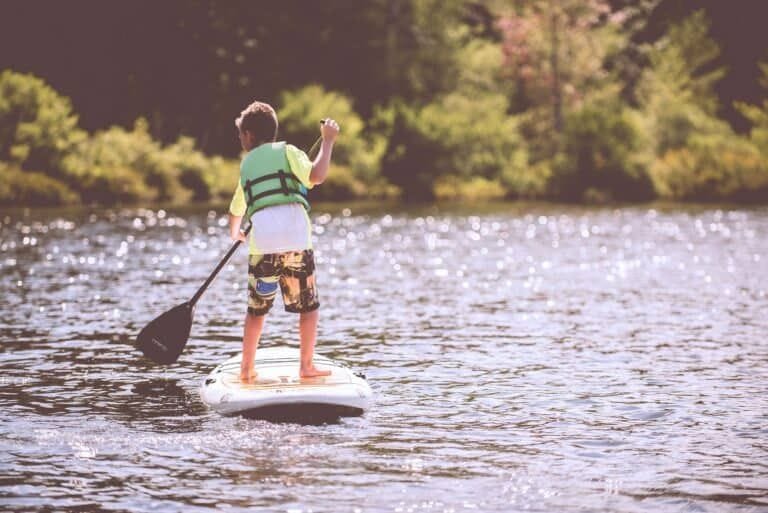
Hard SUP Boards vs Inflatables
Paddle boards come in two varieties: hard and inflatable SUPs.
Hard Paddle Boards
Traditional paddle boards are constructed with solid materials. Today, they mostly combine an EPS foam core with several layers of fibreglass; an epoxy finish protects the board from nicks and scratches. The resulting fiberglass paddle board is durably rigid yet surprisingly light.
Hard boards excel at conquering big waves. And, as long as you have the space to store and transport one, you can get in and out of the water quickly without worrying about inflating and deflating it.
Compared to inflatable SUPs, however, hardboards are heavier. This makes them more adept at handling windy conditions when you’re out on the water. Hardboards also tend to be cheaper to repair. And, despite not being quite as durable as a modern inflatable SUP, they better resist natural wear-and-tear caused by the sun’s UV rays.
GET A HARD PADDLE BOARD IF YOU:
- want a performance edge in competition;
- prefer a narrow board for speed and distance;
- need a board capable of handling big waves and surfing;
- need a board that’s easy to store and transport;
- prefer an easy set-up.
Inflatable Paddle Boards
Historically, inflatable SUP boards were seen as a novelty among paddle boards. Over time, however, they’ve come to dominate the paddle board market thanks to major advances in material science. In short, modern inflatable SUP boards are more durable, portable, lightweight, and versatile than their hardboard counterparts.
For novices, inflatable boards offer two main advantages. The first is that falling doesn’t hurt nearly as much on an inflatable board. The second is that the soft deck reduces contact pressure, reducing the standing fatigue you’re bound to feel in your feet and even up through your knees, core, and neck.
Inflatable paddle boards can actually attain a rigidity comparable to hard boards, making them exceptionally versatile. Depending on shape, inflatables can conquer flat water, small waves, and even whitewater. They’re often larger than hard boards by as much as 20%. This improves both balance and manoeuvrability.
As for storage, inflatable boards can be easily packed down and stored on a shelf in your closet, in the trunk of your Prius, or in a checked bag at an airport. Though most inflatables still come with a patch kit to tackle small repair jobs—an artefact of early, single-layer board designs—you probably won’t ever need it.
GET AN INFLATABLE PADDLEBOARD IF YOU:
- need a compact paddleboard for travel and storage;
- want a versatile board;
- want a lightweight board;
- want a durable build;
- want a board for beginners or injury-prevention.
Brand Name | Product Type
Product Name
Price: 0.00$
The Boracay 10'4 inflatable paddle board is ideal for beginners who want to discover the sport this summer. The material used ensures great rigidity and stability. The Boracay 10'4 is the perfect solution for easy transportation and limited storage space. Comes complete with a carry bag, pump, leash, and a paddle, so you're ready to hit the water and make a few people jealous along the way!
Price: 0.00$
What Size Paddle Board Do I Need?
Choosing the right sized paddle board isn’t just about the activity you intend to use it for, but about your body type. Of course, since no two bodies are exactly the same, there is no easy answer to this question.
Instead, you should come to your own conclusions based on a thorough understanding of how various metrics like length, width, thickness, volume, and weight capacity work together. Below, we discuss these key metrics and offer various examples that will help guide you in choosing the right board for your body type.
Paddle Board Dimensions
Like the reality we exist in, paddle boards have three dimensions. When combined, these dimensions contribute to the total volume and weight capacity of a board. Keep this fact in mind as you read the next sections, since you can’t alter any single dimension without affecting the volume and weight capacity of a paddle board.
Length
Paddle boards come in three lengths: short, medium, and long. Below, we discuss some of the advantages and drawbacks of each. As a general rule, however, a shorter board handles better, while longer boards are faster.
SHORT
Short boards measure 10’ or less. In terms of shape, they’re typically designed as all-around boards. Between their short length and planing hulls, they provide excellent manoeuvrability for activities like big wave surfing. For kids, a board of 8’ is generally recommended as it offers adequate volume and weight capacity ratings.
MEDIUM
Most paddle boards fall into the medium category, measuring between 10’ and 12’. Though commonly built as all around boards (planing hull), you can still find some touring options (displacement hull). Medium boards are a great choice for their versatility, from river cruises to stand up paddle board SUP yoga.
LONG
If you’re looking for a board that can quite literally go the distance, look for a longer board. Longer boards come in at a length of 12’6” and above. The vast majority are touring boards. Thanks to their exceptional length and displacement hulls, they’re effortlessly fast and can maintain a straight trajectory with ease.
Width
Most paddle boards come in a width range of between 25” and 36”. When choosing the right width for your needs, take into consideration the three following criteria.
SKILL
This criteria is especially for those new to the sport. Beginners should opt for wide boards over narrower boards. Wider boards are more comfortable and therefore better for learning. In contrast, experienced paddle boarders can opt for any width as determined by the next two criteria.
ACTIVITY
A SUP yoga practitioner will have very different needs than, say, a competitive racer or a river expedition camper. Yogis will prefer a wide board (31” or greater) since it allows them a greater surface area to perform their sun salutations.
Expeditionists navigating long distances will also opt for a somewhat wider board, as they’ll need the extra space to store their camping gear. Lastly, SUP racing enthusiasts will always go with a narrow board, thanks to the unbeatable manoeuvrability and speed of a race board.
PHYSICAL BUILD
The width of your board should correlate to your body type. Smaller folks will feel more efficient with a narrower board, especially when it comes to paddling. Larger folks will prefer a wider board, as it will drastically improve their balance and stability when compared to a thinner board.
Thickness
Board thickness is an important way to offset your choice of length and width. As such, it’s usually the last metric to be determined. Let’s look at a real-life example.
Suppose you’ve picked out the perfect length and width for your new board. But you have a problem: the board doesn’t have a high enough volume to support your total weight. In this case, you can simply increase the board’s volume/weight capacity by increasing its thickness. When in doubt, go for a thicker board!
Volume
Your paddle board’s volume, expressed in litres (L), is a function of a board’s three dimensions. It provides a quick way to assess a board’s capacity to float when carrying weight: As volume increases, so does weight capacity.
If you’re shopping for a touring paddle board, volume is an especially important metric to pay attention to. Unlike forgiving all-around paddle boards, touring boards are designed with precision figures in mind to optimise speed and manoeuvrability.
Weight Capacity
Another key metric to consider when shopping for the perfect paddle board is weight capacity. This indicates how much weight can be safely placed on the board. This value is expressed in either pounds (lbs) or kilograms (kg).
When calculating your desired weight capacity, be sure to include your body weight in addition to any extra weight such as gear, food, or water you intend to carry.
Using a paddle board with a low weight capacity will cause it to ride low, making it difficult to paddle. On the other hand, using a paddle board with a relatively high weight capacity will negatively affect manoeuvrability. As with volume, weight capacity is especially important when it comes to touring paddle boards, since they’ve been optimised for a specific weight range.
Paddle Board Fins
Flexible rubber fins are added to the underside of a paddleboard to improve performance. Small fins boost a board’s manoeuvrability, while larger fins enhance its stability and tracking. Because most fins are removable, you can swap them out based on your activity type. Removable fin setups also make for more convenient storage.
Below, we look at three common fin configurations. Note that these setups apply to both hardboards and inflatable boards. In the case of the latter, however, the fins can either be detachable semi-rigid fins or fixed and flexible rubber ones.
SINGLE FIN SETUP
This setup is ideal for flatwater paddling since it minimises drag and boasts excellent tracking. A solitary fin is housed and secured in a fin box, where a narrow channel provides room for the fin to slide up and down.
3-FIN SETUP
The 3-fin setup, otherwise known as a thruster, is the benchmark when it comes to tracking on flat water and maintaining stability in surf. As the name implies, there are three fins, all of which are roughly equal in size. A step up is the quad fins (or 4 fin) configuration.
2+1 FIN SETUP
Designed for surfing, this setup is similar to the 3-fin configuration. The difference is that two smaller flexible rubber fins attached to the underside flank a large center fin.

ACCESSORIES
Paddle board accessories are optional add-ons that can improve your paddle board’s performance. Let’s look at some common ones.
Handles
Handles make carrying your paddle board a whole lot easier. One well-placed handle, positioned in the centre-middle of a board, is optimal for even weight distribution. Of course, if your arms are too short to reach that particular spot, feel free to make the necessary tweaks.
When shopping for a handle, opt for one that retracts into the board when not in use. This keeps things as streamlined as possible. It’s also wise to verify a handle’s tensile strength to determine its maximum weight capacity.
Bungee Straps
If you plan on carrying anything more than your body on a paddle board, bungee straps are a must. Located at either the front, back, or both ends of your paddle board, straps are used to secure items like coolers, dry sacks, and more.
Some paddle boards come pre-equipped with straps. For others, you can purchase stretchy cord that can be laced through grommets already attached to the paddle board.
Pump
A pump is absolutely necessary—but only for an inflatable SUP board. You can purchase a hand pump for your stand up paddle board if you’re on a budget, or pay a little more for the convenience of an electric pump. Just don’t forget to take it with you!
Brand Name | Product Type
Product Name
Price: 0.00$
The ONATA Manual Air Pump for SUP is an affordable, high-pressure pump that's perfect for today's drop-stitch inflatable stand up paddle and body boards. Inflates to 20 psi with ease.
Price: 0.00$
Other Essentials
Paddle
For prone paddle boarding, all you need is a set or arms. For stand-up paddle boarding (SUP), however, a paddle is an essential piece of kit.
And while you may think a canoe paddle is interchangeable with a SUP paddle, they’re actually slightly different. SUP paddles are shaped like a teardrop and tilted slightly forward to reduce friction and enhance paddle efficiency.
To determine the right length of SUP paddles for your needs, here’s a heuristic: Take your height and add 9” or 10”. The result is the length of your paddle. For example, if you’re 5’9” (69”), your paddle should be 78” or 79” long. Competitive racers should add about 12” to their height.
Leash
A leash keeps you safe by tethering your ankle to your paddle board. It also reduces the chances of becoming separated from your board after a fall.
Leashes come in a variety of shapes and sizes. Depending on your choice of activity, you may use a different leash for flat water, rushing rivers, and riding waves.
Rashguard or Wetsuit
In warm weather, paddle boarding can be done in nothing more than a bathing suit. But if you burn easily or feel concerned about friction rashes or abrasions, you can wear a rashguard.
For cold-weather paddle boarding, you’ll want to wear either a wetsuit or a dry suit. The latter is more appropriate for very cold conditions.
Personal Flotation Device (PFD)
Because a paddle board is legally considered a vessel, a PFD – also known as a life jacket – is required to operate one.
When shopping for a personal floatation device, take the time to understand how it should fit. Also, make sure your PFD features a safety whistle and a waterproof light.
CONCLUSION
Paddle boarding is a great summer pastime. It’s affordable, easy to learn, and extremely versatile. From SUP yoga to river expeditions to flat water racing, paddle boarding offers many fun variations for everyone.
So, now that you know how to choose the right board for your style of adventure, the only thing left to do is get out on the open water and have fun!
